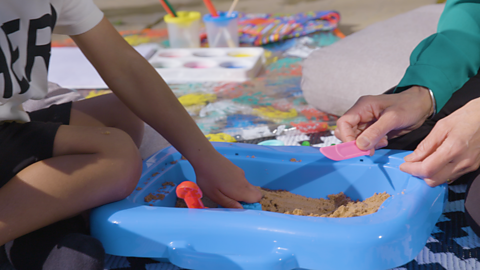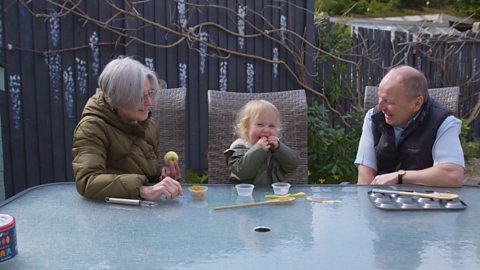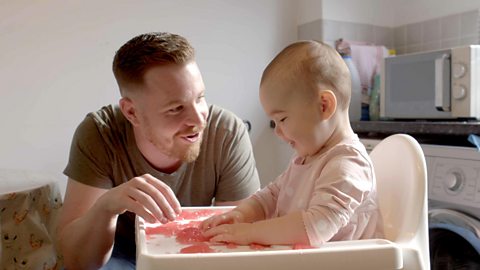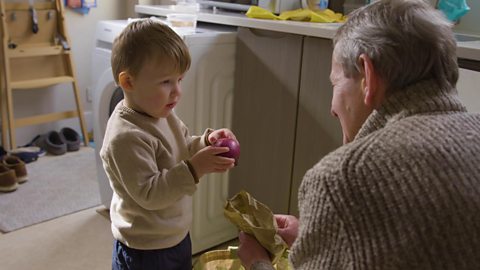Regardless of whether itÔÇÖs at the playground, in a sandbox, at a sand table, or at the beach, kids love playing with sand and there are loads of language benefits too.
Sand play boosts children's physical development, as well as their creativity and imagination. Also, spending the time together exploring is a great opportunity to bond.
Watch the video below to see how sand play opens up a world of conversation possibilities.
What shapes do you want to do?
This one
Wow.
Is that blue your favourite colour? Do you like playing with sand?
Because you get to build sandcastles.
Sandcastles? Wow.
Do you play with sand at school?
Yeah. In the sandpit. It's big. but has spades.
That's nice.
And does your friends play with you?
Yeah.
We play football.
Oh nice.
And once I was playing boys against girls. My friend passed it to me. I went like this to the ball and I kicked it in the goal.
Oh wow! And you won? Your team? The boys team won?
Yeah.
Maybe, when the days are a bit better in the summer time we can go to the seaside and make sandcastles there can't we?
Yeah. would you like that?
Yeah.
That'd be fun, wouldn't it.
We can take your friends with us.
Well they won't know you.
They won't know me? That's OK, we can make friends.
We can take their Mummy and Daddy with us.
What are the benefits of playing with sand?
- One-on-one play is a great time to start a conversation and encourage talking in longer sentences.
- Describing all the things your child is doing in the sand helps them hear and learn new words.
- Asking open questions about what they are building in the sand, allows them to think about abstract concepts and describe their plans.
- Exploring what sand can do is great for developing imagination skills and planning.
- Digging in sand with their fingers develops their fine motor skills.

Sand play ideas and activities
Toddlers and young children get bored easily, so it's good to have some activities up your sleeve for when the inevitable "I'm bored" comes along.
Why not try some of these sand-based activities with your grandchild? They're lots of fun and great for language learning.
1. Treasure Hunt
Hide some toys in the sand and let your grandchild have fun finding them, using their hands, scoops or spades.
Ask them to feel the objects and describe what they feel. Is it hard or soft? Big or small? What shape is it? Etc. These descriptive words will help them use longer sentences in their talking.
You can use words like "warmer" or "colder", or give them clues. This can also help their language and problem-solving skills.
2. Sand art
There are plenty of ways of using sand to make pictures - either in the sandbox with your fingers or using sand on paper with glue (a bit like glitter).
Why not time your grandchild and see what they can draw in a short time?
Talk about their drawing and encourage them to describe it as they go.
3. Texture experiments
When sand gets wet, its texture changes. Exploring different textures is great for building vocabulary around descriptive words.
If you have some wet sand, why not try building some structures with it?
4. Imaginative play
Sand is a great canvas for imaginary play. Perhaps your grandchild loves diggers? They could recreate their own building site.
Add some of their toys into the sandpit and see where their imagination takes you.
You could encourage them to tell you the story as they play.

Find out more about sensory play
Sensory play is great for your child's physical and language development. But did you know that sensory play is often simpler than you might think?
- Find out what exactly counts as sensory play and why it's great for children's development.
- If you've got a very small grandchild, check out these simple sensory play ideas for babies.
- Sensory play doesn't always have to be messy, but sometimes messy is good. Find out more about messy play for toddlers.






